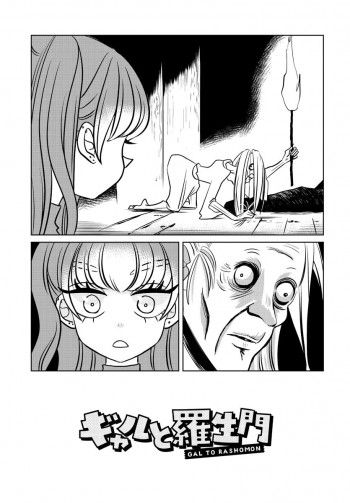Summary

Sinner (Priest 2)
by Sierra Simone
I’m not a good man, and I’ve never pretended to be. I don’t believe in goodness or God or any happy ending that isn’t paid for in advance.
What do I believe in? Money. Sex. Macallan 18.
They have words for men like me—playboy. Womanizer. Skirt chaser.
My brother used to be a priest, and he only has one word for me.
Sinner.
.
Read
Sinner (Priest 2) on http://kissnovel.net
Martial Peak Reviews
Sierra Simone's Sinner (Priest 2) is a provocative exploration of morality, desire, and the complexities of human relationships, set against a backdrop of wealth and indulgence. The novel picks up where its predecessor, Priest, left off, diving deeper into the lives of its characters, particularly focusing on the enigmatic and flawed protagonist, who is unapologetically aware of his shortcomings. The blurb sets the tone perfectly: this is a story about a man who does not believe in goodness or redemption, but rather in the tangible pleasures of life—money, sex, and fine whiskey.
Simone's writing is both lyrical and raw, capturing the essence of a man who revels in his sins while grappling with the shadows of his past. The protagonist, whose name is not revealed in the blurb, embodies the archetype of the 'bad boy'—a character often romanticized in contemporary literature. However, what sets him apart is his self-awareness; he does not shy away from the label of 'sinner.' This acknowledgment creates a compelling tension throughout the narrative, as readers are drawn into his world of hedonism while simultaneously questioning the morality of his choices.
The theme of duality is prevalent in Sinner. The protagonist's relationship with his brother, a former priest, serves as a poignant contrast to his own lifestyle. The brother represents the ideals of faith and virtue, while the protagonist embodies the antithesis of those values. This dynamic raises intriguing questions about the nature of sin and redemption. Can one truly be a sinner if they do not believe in the concept of sin? Simone deftly navigates this philosophical territory, inviting readers to ponder the complexities of faith, morality, and the human condition.
Character development is a standout aspect of the novel. The protagonist is not merely a caricature of a playboy; he is a multi-dimensional character shaped by his experiences and choices. As the story unfolds, readers witness his internal struggles and the moments of vulnerability that reveal his deeper desires and fears. Simone skillfully peels back the layers of his persona, allowing readers to empathize with him despite his morally ambiguous actions. This complexity makes him a relatable figure, as many readers may find themselves grappling with their own definitions of right and wrong.
The supporting characters also contribute significantly to the narrative's depth. Each character serves as a reflection of the protagonist's inner turmoil, whether they embody temptation, judgment, or understanding. The interactions between the protagonist and these characters are charged with tension, often leading to moments of self-reflection that challenge his worldview. Simone's ability to create rich, believable characters enhances the emotional impact of the story, making it more than just a tale of lust and indulgence.
The novel's exploration of sexuality is both explicit and nuanced. Simone does not shy away from graphic scenes; instead, she uses them to illustrate the protagonist's quest for connection and fulfillment. The sex in Sinner is not merely for titillation; it serves as a vehicle for character development and thematic exploration. Through these encounters, the protagonist confronts his own desires and the emptiness that often accompanies them. The juxtaposition of physical pleasure and emotional detachment creates a haunting atmosphere that lingers long after the pages are turned.
Moreover, the setting of the novel—a world of affluence and excess—acts as a character in its own right. The opulence of the protagonist's lifestyle contrasts sharply with the spiritual undertones of his brother's past, further emphasizing the theme of duality. Simone's vivid descriptions of luxurious surroundings and indulgent experiences immerse readers in this world, making it both alluring and suffocating. This setting serves as a backdrop for the protagonist's internal conflict, highlighting the emptiness that can accompany a life devoted solely to pleasure.
In terms of pacing, Sinner maintains a steady rhythm that keeps readers engaged. The narrative flows seamlessly between moments of introspection and action, ensuring that the story never feels stagnant. Simone's ability to balance these elements is commendable, as it allows for a deeper exploration of the protagonist's psyche while still delivering a compelling plot.
Comparatively, Sinner can be likened to works by authors such as Tessa Bailey and Christina Lauren, who also delve into themes of desire and moral ambiguity. However, Simone's approach is distinct in its philosophical underpinnings and emotional depth. While Bailey and Lauren often focus on the lighter aspects of romance, Simone's narrative is imbued with a sense of gravity that challenges readers to confront uncomfortable truths about themselves and society.
Overall, Sinner (Priest 2) is a captivating read that transcends the typical boundaries of romance and erotic fiction. Sierra Simone has crafted a story that is as thought-provoking as it is steamy, inviting readers to explore the complexities of sin, redemption, and the human experience. The novel's rich character development, intricate themes, and evocative prose make it a standout addition to contemporary literature. For those willing to embrace the darker aspects of love and desire, Sinner offers a compelling journey that lingers long after the final page is turned.
























Reviews 0
Post a Reviews: